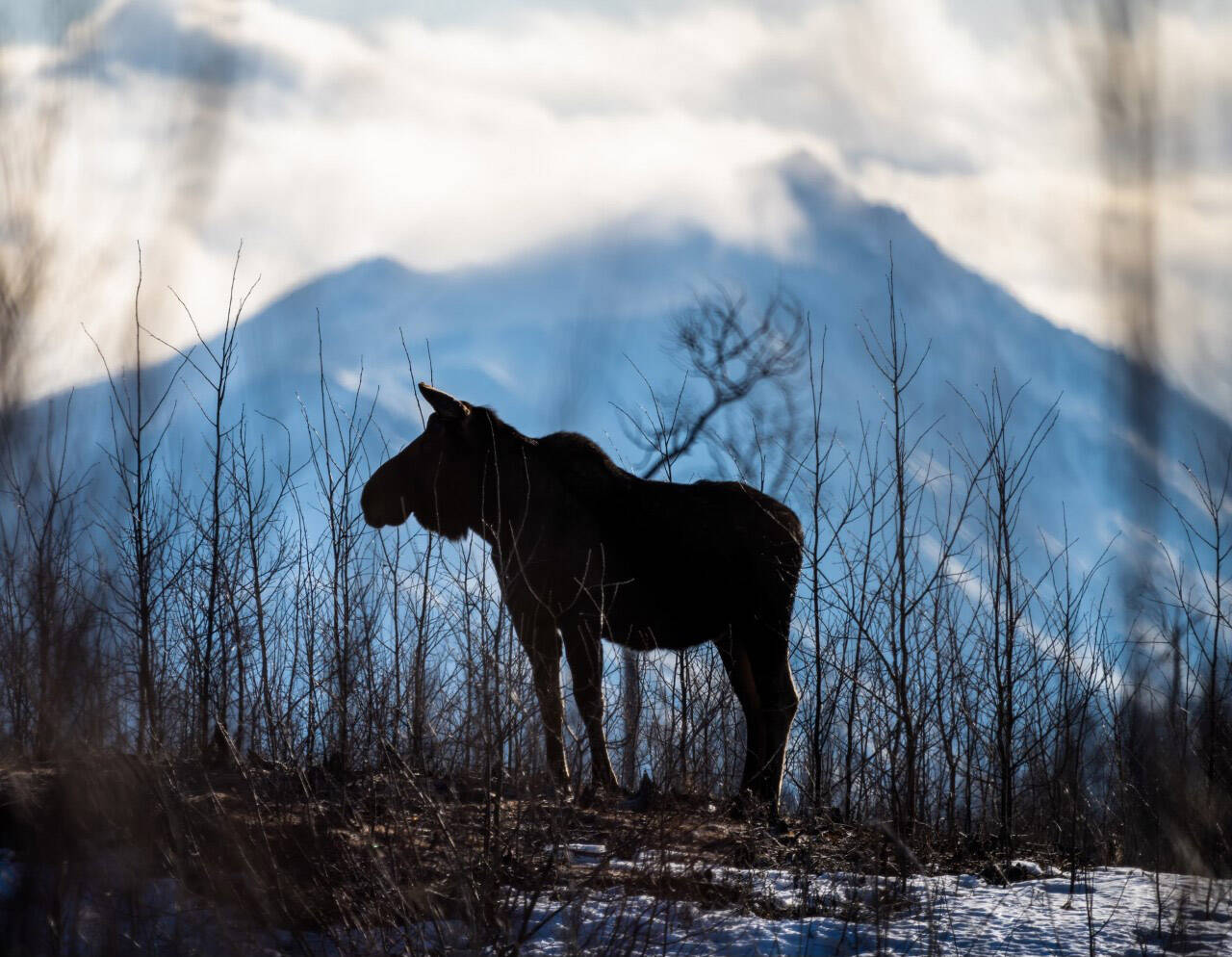This story starts 2,500 miles southeast as the raven flies from Kenai National Wildlife Refuge to the heart of the Weminuche Wilderness in the southern Rocky Mountains, where I pause near a moose beside an alpine lake. My heart pounds while I ponder how this giant creature will react to my presence. I amuse the possibility of befriending this moose from reading “If You Give a Moose a Muffin” as a child. If only I had a muffin.
Coming across a moose within the Kenai National Wildlife Refuge is not unusual, but this was a thrilling and unfamiliar wildlife experience for me in the Weminuche Wilderness.
This encounter struck a deeply resonating chord that cemented a deep-seated desire to learn how and why we have large areas of protected public land. These are areas where creatures like moose, salmon, bears, caribou and wolves can thrive amidst the increasing pressures of land development.
Fast forward six years, and I am in Alaska encountering moose on a near-weekly basis. At Kenai National Wildlife Refuge, I learned how integral they are to Alaska’s past, present and future inhabitants.
In 1941, President Franklin D. Roosevelt established the Kenai National Moose Range through the Executive Order process. This was a major step for its eventual integration into the National Wildlife Refuge System in 1980 when it changed to Kenai National Wildlife Refuge by the Alaska National Interest Lands Conservation Act.
While the name changed, the moose remained.
I admire moose for their persistence against winter elements, predation and relentless mosquitoes. Alaska Department of Fish and Game estimates at least 7,000 moose are harvested annually in Alaska, totaling about 3.5 million pounds of meat. In Alaska, moose and salmon can be considered flagship species, which are species chosen to raise support for conservation in a specific place or context.
It’s easy to support the flourishing of a species when that meat commonly fills up plates on numerous dinner tables. It’s often more challenging to raise conservation awareness and resources for less renowned species. Being a well-rounded steward involves looking at the whole picture of how all species are interconnected.
The concept of being successful stewards of the land and wildlife is very familiar to those who have lived and thrived here since time immemorial. The refuge encompasses the ancestral homelands of the Dena’ina people. The local Dena’ina people, the Kahtnuht’ana, are named for Kahtnu, the Kenai River.
In 1971 under the Indian Reorganization Act, the Kenaitze Indian Tribe was federally recognized as a sovereign, independent nation with about 1,800 tribal members living across the Kenai Peninsula.
Alongside Kenaitze tribal members and other refuge staff, Secretary of Interior Deb Haaland recently visited Kenai National Wildlife Refuge on a frosty autumnal morning.
We gathered around the Heartbeat of Mother Earth drummers as they filled up the refuge visitor center with the reverberating drumbeats of welcoming songs. We joined in a circle around the drummers and the power of drumbeats and song filled the room. There was a palpable healing presence of interconnectedness to each other and to this peninsula.
How people and nature are interconnected is becoming an increasingly studied field. There are terms like socio-ecological systems, biodiversity conservation and systems thinking, environmental philosophy, and human dimensions of natural resources.
I have met people who devote their entire careers and lives to studying the numerous methods by which our public land is protected.
Public access to federally protected lands varies based on the different federal land management agency mandates. National wildlife refuges, like Kenai National Wildlife Refuge, are one method of land protection that prioritizes wildlife habitat conservation while also allowing compatible public uses.
Land protections are only as permanent as people decide them to be. Lines on maps can be redrawn, budgets can be reduced and policies can be rewritten.
Protected areas like the refuge provide opportunities to fish, hunt, learn, observe nature and recreate. Paraphrasing vocal conservationist Edward Abbey, publicly protected areas exist only so long as there are defenders for them.
The National Parks are often called “America’s Best Idea,” and the National Wildlife Refuge System is often called “America’s Best-Kept Secret.” I work for the National Wildlife Refuge System, so the refuges are not a secret to me.
However, why should people who have yet to have the opportunity to come face-to-face with a moose in the refuge, or to connect with protected public lands in other ways, care?
For one, the relevancy, defense and advocacy of protected conservation areas predominantly depend on people establishing memorable connections to our public lands. At Kenai National Wildlife Refuge, we stand on the shoulders of the species located here and on the shoulders of those who recognize the importance of biodiversity conservation.
I’m looking forward to returning to the refuge and seeing the special way people and nature connect that made my time here special. At the very least, to encounter a moose again I still need to find out what happens when you actually give a moose a muffin.
John Kurtz is a Presidential Management Fellow for the U.S. Fish and Wildlife Service, and he has been on a temporary rotation with the Kenai National Wildlife Refuge. Good fortune has provided him with a taste of Alaska living while learning about wildlife refuge management.
Find more Refuge Notebook articles (1999–present) at https://www.fws.gov/refuge/Kenai/community/refuge_notebook.html.

